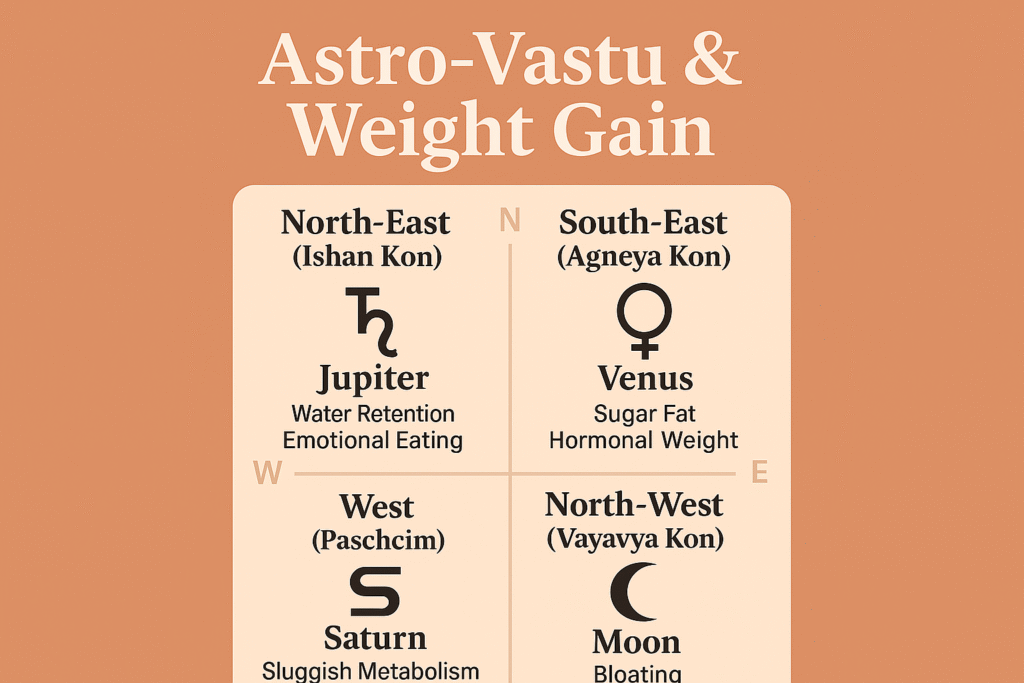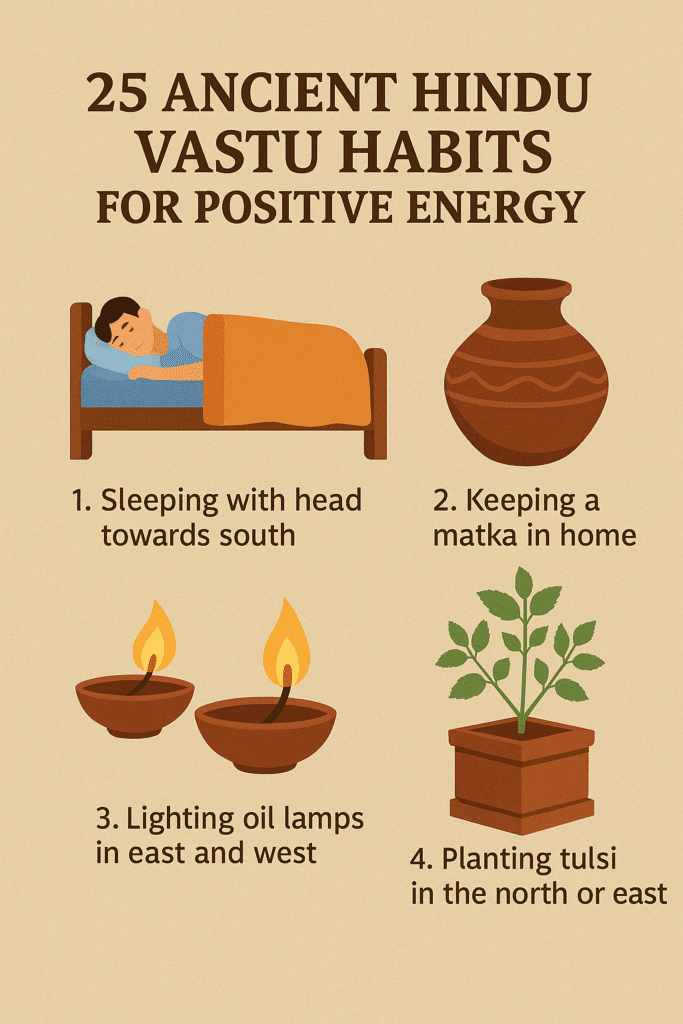Astro-Vastu & Weight Gain: How Directions in Your House Decide Your Body

Astro-Vastu & Weight Gain: How Directions in Your House Decide Your Body By Astrologer & Vastu Consultant Ashish Somani Weight gain is not only about food and exercise. Your home, its directions, and the objects you place in them silently influence your body. According to Astro-Vastu, every direction of the house is governed by a […]
North-East Toilet Vastu Dosha – Effects, Planetary Damage & Remedies

North-East Toilet Vastu Dosha – Effects, Planetary Damage & Remedies
Why Vastu Shastra Is Essential for Your Home’s Health and Harmony

“Why Vastu Shastra Is Essential for Your Health, Home Energy, and Spiritual Balance”
Astrology of Home Interiors Vastu – From Wall Clocks to Water Fountains

Astrology of Home Interiors Vastu – From Wall Clocks to Water Fountains Discover how everyday home items like clocks, water fountains, and mirrors influence your life through planetary energies. T
25 Ancient Hindu Vastu Habits That Align with Vastu Shastra for Home Energy, Health & Prosperity

25 Ancient Hindu Vastu Habits That Align with Vastu Shastra for Home Energy, Health & Prosperity Astrologer Ashish Somani Introduction Have you ever wondered why your grandparents had specific ways of doing things — like placing a clay pot in the corner, lighting a lamp twice a day, or never sweeping after sunset? These were […]
SouthEast Vaastu Explained: Agni Corner, Venus Energy, Earth Rotation & Kitchen Fire Science

SouthEast Vaastu Explained: Agni Corner, Venus Energy, Earth Rotation & Kitchen Fire Science
NorthEast Vaastu, Earth’s Magnetic Field & Electron Flow: The Science of Sacred Energy Alignment

Northeast Vaastu aligns with Earth’s magnetic field and electron flow. Learn how water, sound, and ionizers can energize your home using ancient science.
The Secret Power of Mars Nakshatras: How Symbols Can Unlock Your Destiny

Unlock the power of Mars Nakshatras—Mrigashira, Chitra, and Dhanishta—using symbols to accelerate success, love, and transformation. Discover how a deer, pearl, or drum can activate cosmic energy and fast-track your destiny!
Best Planetary Remedies Using Natural Elements: Cloves, Camphor & More

Best planetary remedies using natural elements such as burning herbs, applying oils, and placing crystals to balance energies at home. Enhance harmony, prosperity, and protection through simple Vedic astrology techniques for Mars, Venus, Jupiter, Saturn, and other planets.
Unlocking Venus Energy: Ancient Hindu Vaastu Secrets for Prosperity and Relationships

“Discover ancient Hindu Vaastu secrets to unlock Venus energy in your home for prosperity, love, and harmonious relationships. Enhance wealth & peace today!”
